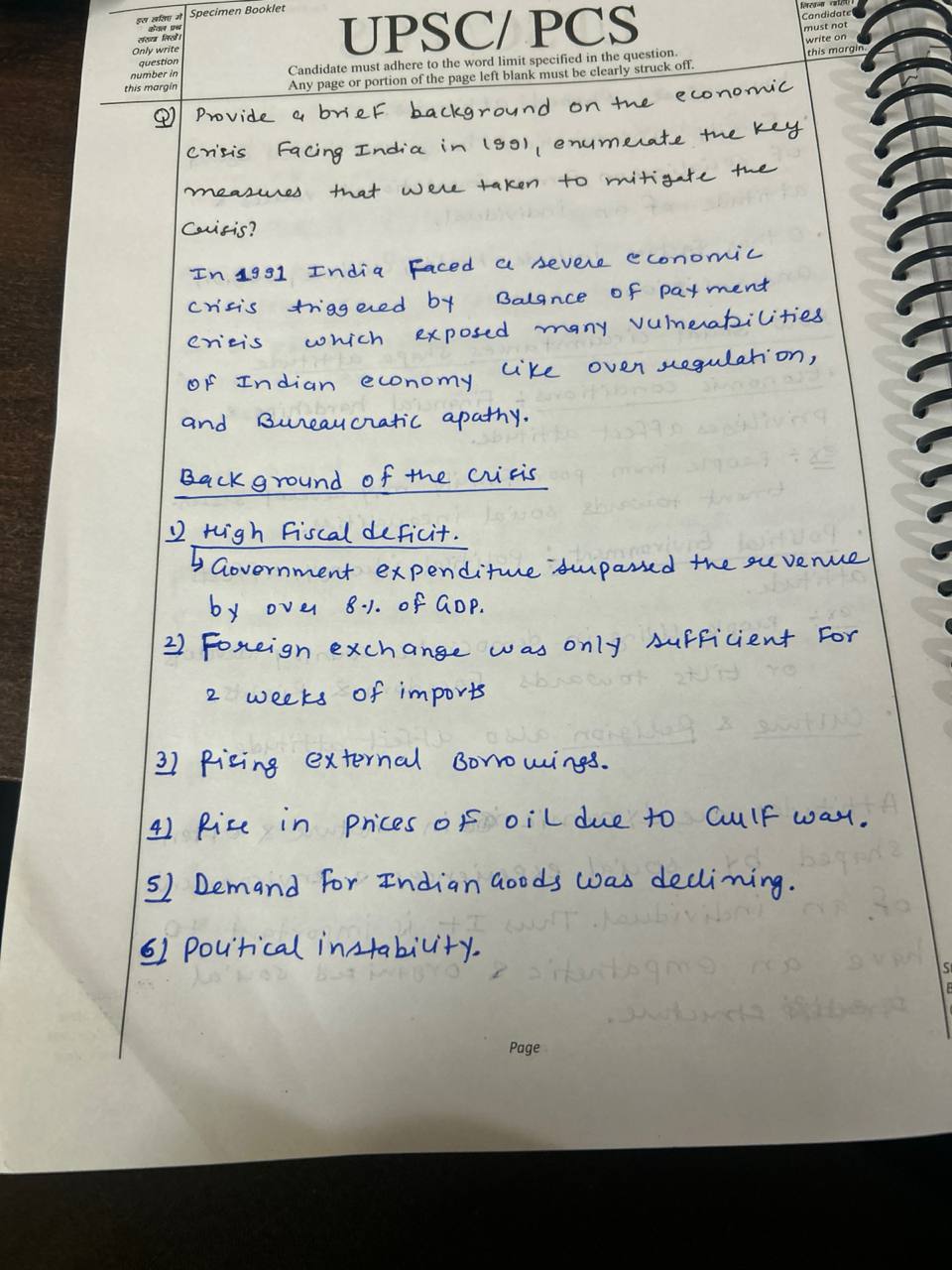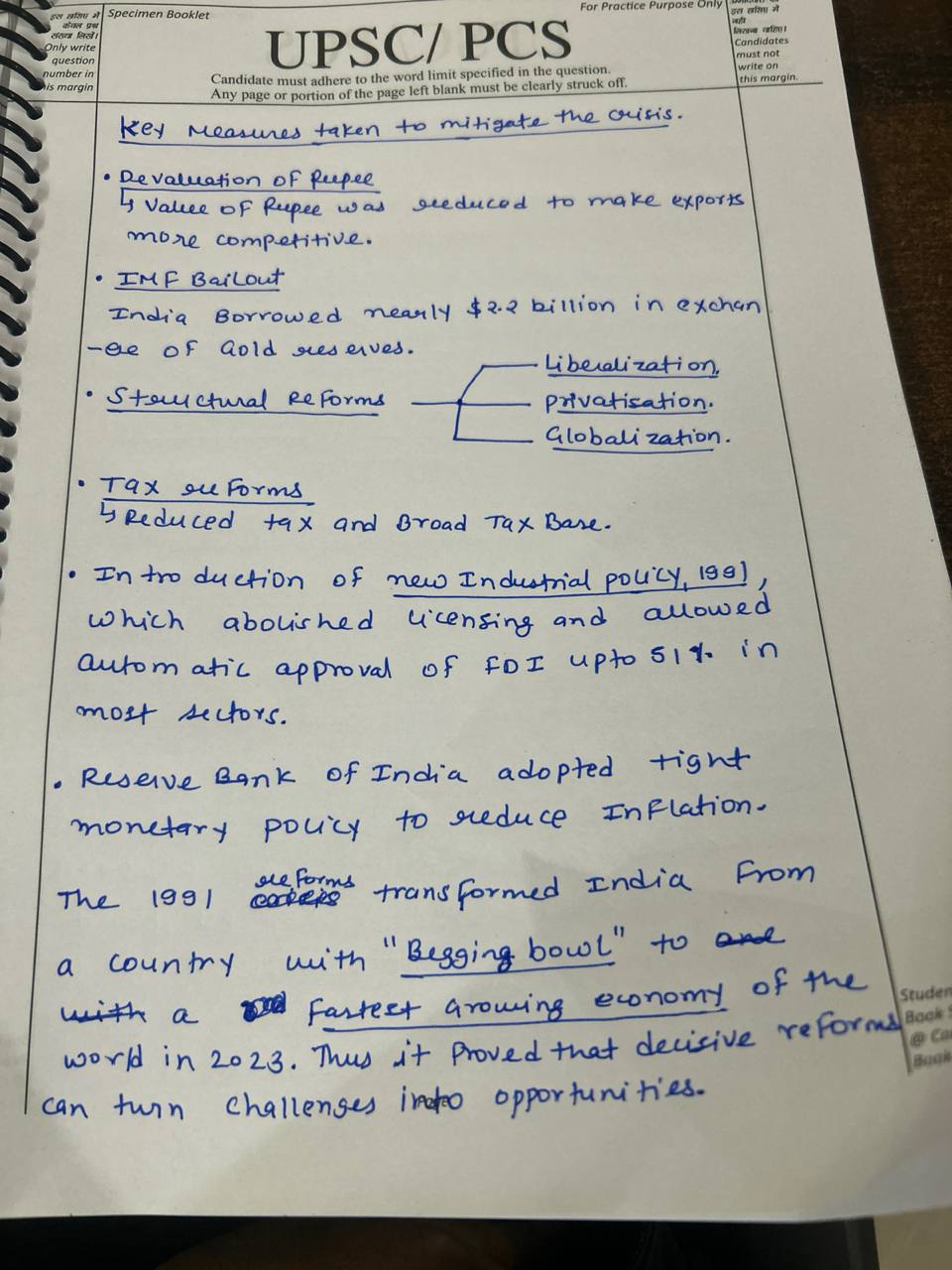Give a brief overview of the economic crisis that India faced in 1991 and list the main steps that were done to alleviate it.
The Indian government has undertaken several reforms and initiatives aimed at transforming the agricultural sector. These efforts include the implementation of new farm laws, promotion of agribusiness and food processing, and the use of technology and innovation. Here’s a detailed discussion of thesRead more
The Indian government has undertaken several reforms and initiatives aimed at transforming the agricultural sector. These efforts include the implementation of new farm laws, promotion of agribusiness and food processing, and the use of technology and innovation. Here’s a detailed discussion of these efforts and their impact on farmers’ income and livelihood:
1. Implementation of New Farm Laws
Objectives:
- Market Access: Allow farmers to sell produce outside government-regulated markets (mandis).
- Contract Farming: Facilitate direct agreements between farmers and buyers.
- Reform APMC Act: Allow private traders and companies to buy directly from farmers.
Impact:
- Market Access:
- Progress: The laws aimed to provide farmers with more options to sell their produce, potentially leading to better prices and reducing dependency on mandis.
- Challenges: The implementation faced significant opposition from farmers who were concerned about the potential weakening of MSP (Minimum Support Price) and the dominance of large corporations.
- Contract Farming:
- Progress: This was intended to provide farmers with assured markets and better prices through contracts with companies.
- Challenges: Farmers expressed concerns about the terms and conditions of contracts, fearing exploitation and lack of bargaining power.
- APMC Act Reforms:
- Progress: These reforms aimed to increase competition and efficiency in the market.
- Challenges: Resistance from vested interests and difficulties in implementing these changes uniformly across states impacted their effectiveness.
Overall, while the reforms were designed to improve market efficiency and farmer income, they faced significant resistance and concerns regarding their implications for smallholder farmers and MSP guarantees.
2. Promotion of Agribusiness and Food Processing
Objectives:
- Value Addition: Increase the value of agricultural produce through processing.
- Job Creation: Generate employment opportunities in agribusiness.
- Export Opportunities: Enhance the global competitiveness of Indian agricultural products.
Impact:
- Value Addition:
- Progress: Initiatives like the Pradhan Mantri Kisan Sampada Yojana (PMKSY) aimed to boost food processing capacities, reducing post-harvest losses and improving farmer incomes.
- Challenges: The growth of food processing has been uneven, with some regions and sectors benefiting more than others. Infrastructure and investment barriers have limited the sector’s potential.
- Job Creation:
- Progress: The promotion of agribusiness has created various employment opportunities in processing units and related industries.
- Challenges: Job creation has been impacted by the uneven development of processing infrastructure and the need for skilled labor.
- Export Opportunities:
- Progress: Efforts to promote export-oriented agribusiness have opened new markets for Indian agricultural products.
- Challenges: Competition and quality issues have sometimes hampered the ability of Indian products to capture international markets.
3. Use of Technology and Innovation
Objectives:
- Productivity Enhancement: Improve agricultural productivity through modern techniques and tools.
- Resource Efficiency: Optimize the use of water, fertilizers, and other inputs.
- Market Information: Provide farmers with better access to market data and advisory services.
Impact:
- Productivity Enhancement:
- Progress: Adoption of technologies like precision farming, improved seed varieties, and efficient irrigation systems has led to better yields.
- Challenges: High costs of technology and a digital divide between regions have limited widespread adoption.
- Resource Efficiency:
- Progress: Technologies such as drip irrigation and remote sensing have helped optimize resource use, improving sustainability.
- Challenges: Limited access to technology and training has constrained its adoption among smallholder farmers.
- Market Information:
- Progress: Initiatives like digital platforms and mobile apps have improved farmers’ access to real-time market prices and advisory services.
- Challenges: Connectivity issues and digital literacy constraints in rural areas have affected the reach and effectiveness of these services.
Overall Assessment
- Income and Livelihood Improvements:
- Successes: Government efforts have led to some improvements in farmer incomes and livelihoods through better market access, enhanced processing capacities, and productivity gains.
- Challenges: Many reforms and initiatives have faced implementation challenges and resistance, particularly among smallholder farmers. The benefits have been uneven, and some reforms have led to unintended consequences or concerns about their long-term impact.
In conclusion, while the government’s efforts to reform the agricultural sector have had positive impacts, the success of these initiatives has been mixed. Addressing implementation challenges, ensuring equitable benefits, and supporting smallholder farmers are crucial for realizing the full potential of these reforms and improving the income and livelihood of farmers.
See less


See less